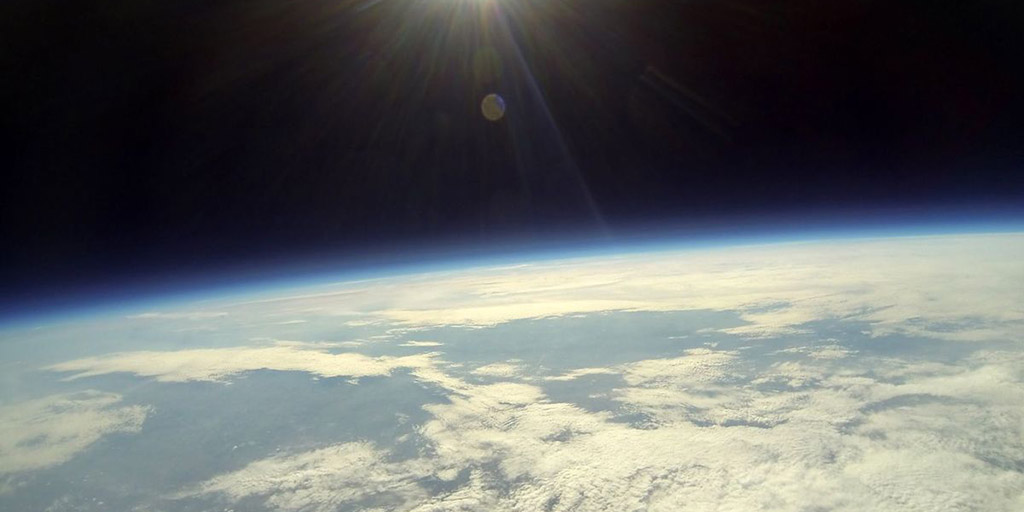The Final Frontier: How Baylor professors are helping shape our understanding of space

Did you know that Baylor has a research center that contributes to our understanding of outer space? It’s called CASPER — the Center for Astrophysics, Space Physics and Engineering Research — and it’s located at the Baylor Research and Innovation Collaborative (BRIC).
Were you aware that Baylor is part of a prestigious consortium of leading universities researching space? Baylor joined such universities as Caltech, Harvard, Johns Hopkins and MIT in the Universities Space Research Association (USRA) back in 2005.
From physics to aviation and even film, here are three areas where Baylor professors are contributing to what we know about space — and how our thoughts on space reflect back on us:
Space dust: Space is filled with tiny cosmic dust particles sent flying by the creation of stars or planets, and these particles play a big role in research done by three Baylor professors.
Dr. Truell Hyde, MS ’80, PhD ’88, Baylor’s vice provost for research and director of CASPER, studies how space dust plays a role in proto-planetary formation, as well as what happens to dust left behind after planets form. His research also has a very practical application: helping protect spacecraft from such debris.
Dr. Rene Laufer, associate research professor and the head of CASPER’S space science lab, investigates how dust and plasma in space can help explain questions about the universe’s structure, how stars, planets and moons are formed, and more. Inside test facilities at the BRIC, he builds instruments for satellites and performs experiments in microgravity environments to gain deeper understanding.
Dr. Lorin Matthews, BS ’94, PhD ’98, associate professor of physics and associate director of CASPER, focuses her research on “dust bunnies.” Yes, just like the dust bunnies that form behind bookshelves or under the bed, dust particles in space can start sticking together and form larger structures. Matthews calculates how the charge collected on these dust bunnies impacts the rate at which they grow. This research could help us better understand how planets are formed.
Geomagnetic storms: Dr. Trey Cade, associate research professor and director of the Baylor Institute for Air Science, studies disturbances in the Earth’s magnetic field known as geomagnetic storms. Much is unknown about these space weather disruptions, and Cade’s research seeks to gain a better understanding of how to measure these storms and provide warnings of their effects.
Film: Space has captured the imagination of movie audiences since the invention of the moving picture, from Flash Gordon serials to 2001: A Space Odyssey to the latest Star Wars.
Chris Hansen, chair of Baylor’s Department of Film and Digital Media, says space makes for a compelling backdrop for films because it represents something so aspirational; with each new achievement, like landing on the moon, comes another goal, like landing on Mars. There’s also the unknown — the idea of space as the “final frontier,” as it was famously called on Star Trek, still resonates.
Joshua Hays, a research associate in Baylor’s Institute for the Studies of Religion, says space allows filmmakers to tell familiar stories in an unfamiliar setting, highlighting human experience in a new way. In his 2015 book A True Hope: Jedi Perils and the Way of Jesus, he examined spiritual themes such as redemption and reconciliation that are found in the Star Wars series.
Six professors, three broad areas, and numerous ways of approaching our understanding of space. We can’t go “to infinity and beyond” without the important work being done here on the ground in labs and classrooms across Baylor to help us get there someday.
Sic ’em, Baylor professors!
[Pictured above: Earth from about 100,000 feet up, as taken by Baylor staff member Josh Ward, BBA ’02, and Jacob Boline, BSECE ’17, via a balloon launched in 2016.]

